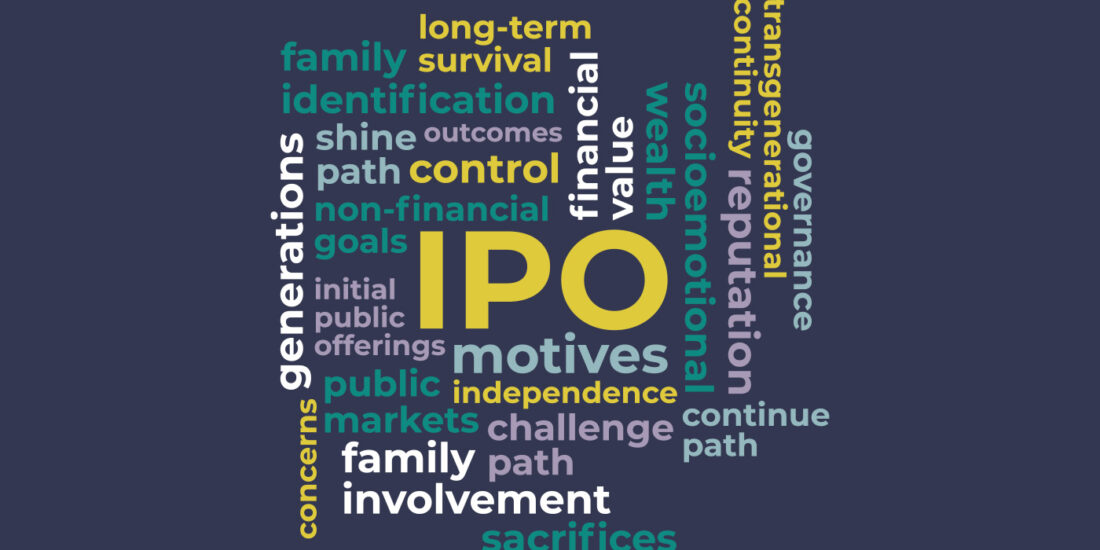Linking Bonding and Bridging Ownership Social Capital in Private Firms: Moderating effects of ownership-management overlap and family firm identity
(Authors: Lorraine M. Uhlaner, Ilse A. Matser, Marta M. Berent-Braun and Roberto H. Floren)
Research Applied précis prepared by Ken Moores – Moores Family Enterprise and Bond University, Australia
The family effect is generally regarded as the differentiating factor between family and non-family firms. It emerges from the overlap of family, owners, and managers and has long been the focus of both family business scholars and consultants. Labelling this factor as “familiness” certainly popularized the effect and may well have helped at one level but its vagueness has mitigated against successfully measuring and managing it in family firms. Recently social capital, with its more developed intellectual origins, promises greater hope for how to manage the family effect. But it too begs evidence-based recommendations that can be implemented.
This paper offers some guidance on how to manage the family effect as social capital. (Social capital is the sum of actual and potential resources embedded within, available through, and derived from, the network of relationships possessed by an individual or social unit. In short, it comprises both the network and the assets mobilized through that network.)
Implications: How can advisors help family firms manage the family effect as social capital?
While the authors suggest that family businesses should invest in both internal (bonding) and external (bridging) social capital, the study’s results of the relationship between these two — and factors that affect (moderate) it — say more about how to build bonding ownership social capital (OSC). Family owners can build their social capital by committing to family governance structures and processes that enhance relationships and shared understandings.
Specifically, families can invest in ownership social capital (OSC) with a package of measures that commences with holding regular family meetings that will:
- Strengthen communication
- Build good relations among members of the business owning group (i.e. trust, cooperation, honesty, and team spirit)
- Distill common values
- Develop a shared vision among owners
The ‘family effect’ of these family system features is that they will be associated with an increased capacity to mobilize resources, especially nonfinancial ones, of the business-owning group. Furthermore, this appears to hold for firms with both strong and weak family firm identity.
Detail from the research
In a study based on telephone survey responses from 679 Dutch small/medium enterprise (SME) firms, the authors examine the relationship between internal bonding and external bridging ownership social capital (OSC).
Bonding OSC is measured as:
- Quality of relationships such as honesty, co-operation and working together, and
- Shared vision such as agreeing on vision, key objectives, and commitment to managing wealth as a group.
Bridging OSC is measured as:
- Network mobilization or the extent to which business owners assist the business through engagement with their external contacts.
Furthermore the authors assess whether this relationship is affected by the strength of the family firm’s identity and ownership-management overlap.
Family firm indentity reflects the degree to which family identity and firm identity overlap. A strong shared identity in family firms is promoted by:
- kinship
- name shared by firm and family
- common history among family members, and
- familiarity among family members
(Family firm identity was measured by five yes/no questions that assess these aspects.)
Owner-management overlap was measured as the percentage of managers who were also owners so as to extract the “ownership effect,” as the authors believe owner-managers have different role expectations from non-owning managers.
Findings
The study finds:
- There is a positive relationship between bonding and bridging social capital
- The strength of this relationship is in part affected by family firm identity and over-management overlap
- Only the shared vision of bonding social capital is affected (moderated) positively by family firm identity and owner management overlap
- The three-way interaction involving family firm identity and owner-management overlap only holds true in a positive way for shared vision and only when at least one of these is high.
Importantly, these findings emphasize that the family system can only create value in interaction with other organizational systems. While family firm identity does not have a direct effect on network mobilization (Bridging OSC) it can have a positive effect when combined with a strongly held shared vision (Bonding OSC) of the firm. Owners in firms with strong family firm identities are more likely to act as stewards when they share a vision for the firm and owning group.
To read the entire article go here.
About the contributor
 Ken Moores is an FFI Fellow and recipient of the 2015 Hollander Award. He is principal in Moores Family Enterprise in Australia and an emeritus professor at Bond University. Ken can be reached at ken@mooresfamilyenterprise.com.
Ken Moores is an FFI Fellow and recipient of the 2015 Hollander Award. He is principal in Moores Family Enterprise in Australia and an emeritus professor at Bond University. Ken can be reached at ken@mooresfamilyenterprise.com.




